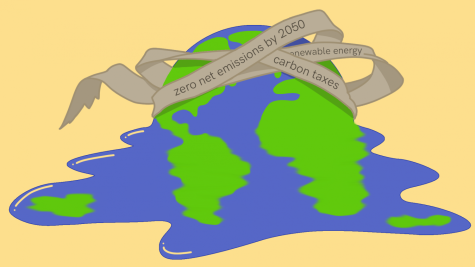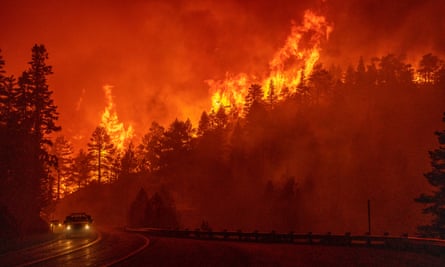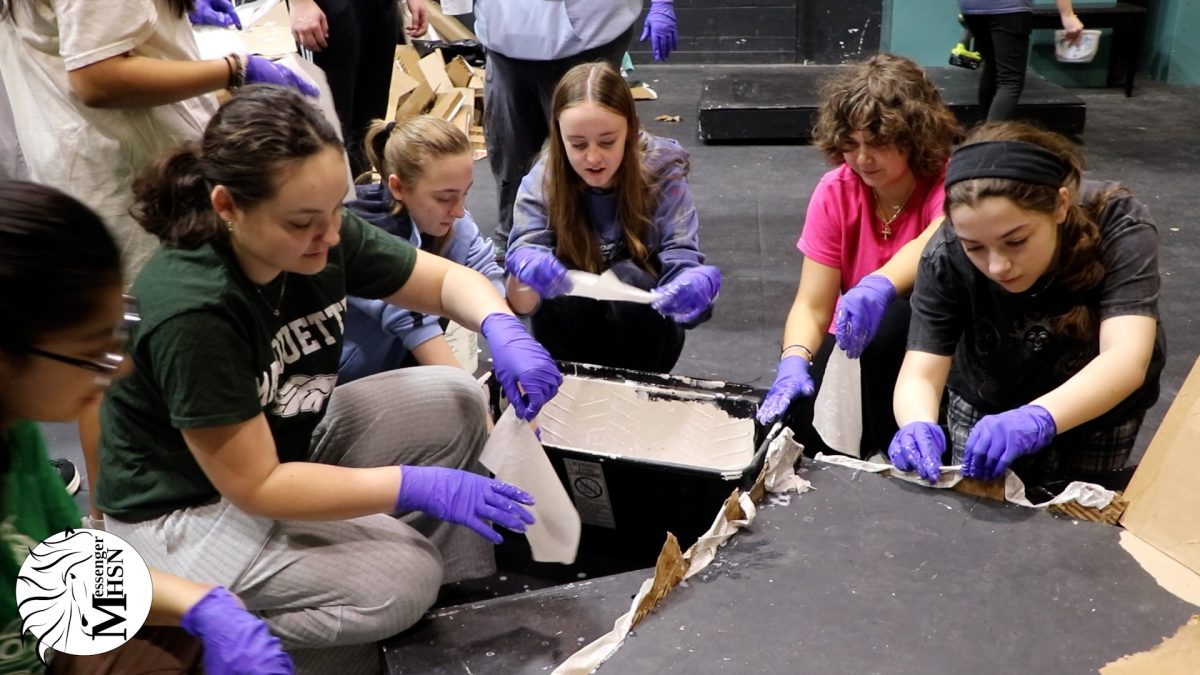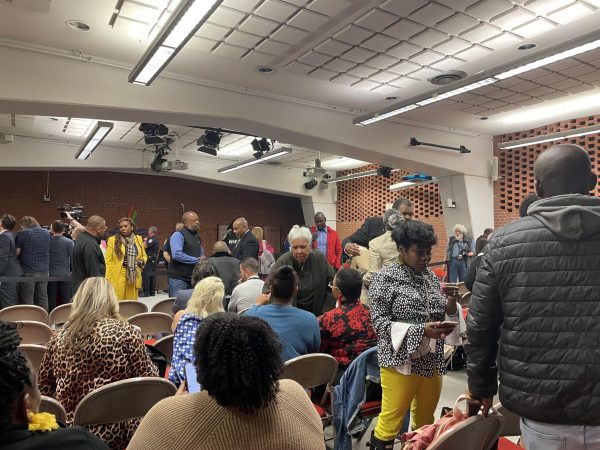There is no planet B — a timeline of climate change legislation
November 5, 2020

Picture this: a city sits at 122 degrees Fahrenheit — more than halfway to boiling. Outside in the empty streets, all is silent except for the turbulent humming of power grids, straining to meet the endless demand for air conditioning. Cooling units are at the point of overloading, and during the daytime, working outdoors is forbidden, for shade no longer provides any solace from the torrid, blistering heat. Only at night do citizens dare to venture outside into the lingering darkness of a seemingly post-apocalyptic terrain. Animals and humans are at death’s door, perishing at alarming rates.
This is becoming a reality.
At 122 degrees Fahrenheit, human flesh begins to cook, and in August 2020, Death Valley measured 130 degrees Fahrenheit, one of the highest temperatures ever recorded on Earth. Once believed to be an urban anomaly, climate change is approaching the point of no return — unless something is done about it soon.

In recent months, the U.S. has been hammered with a string of disasters on top of a global pandemic. Scorching wildfires ravaged California and much of the West Coast, covering regions in a thick blanket of noxious smoke. With lightning storms and rolling blackouts, sweltering heat waves have pushed climate activists and ordinary Americans to argue the reality of climate change to doubters. This year, 8,600 wildfires have burned over 4.1 million acres in California alone.
“It is generally accepted that climate change is contributing to California’s wildfires through drying out fuels, lengthening the ‘fire season’ by several weeks, making our summers hotter and increasing the likelihood of lightning storms and winds,” said John Helms, Professor Emeritus of Forestry at the University of California, Berkeley. “I think some people just tend to deny the existence of climate change when they don’t see it affecting their daily lives.”
Global warming is defined as the rising average temperature of the Earth’s climate system, which is mainly due to the release of greenhouse gases into the Earth’s atmosphere. In recent years, carbon dioxide levels have skyrocketed because humans have become heavily dependent on fossil fuels such as coal, oil and natural gas. The adverse effects of global warming, including the destruction of ecosystems, rising sea levels and increased frequency of extreme weather, are widely known.
While the Earth’s atmospheric carbon levels have fluctuated in the past, today’s measurements mark the highest quantities since hundreds of thousands of years ago. Scientists have stressed the importance of maintaining global temperature rise from pre-industrial levels below 1.5 degrees Celsius, which was then corrected to 2 degrees Celsius. Reaching 2 degrees Celsius is expected to trigger a chain of cataclysmic events, inciting mass migration and deadly heat stress, costing trillions of dollars and resulting in millions of deaths; currently, the planet is on pace to shatter this number.
Today, the U.S. is the world’s second largest emitter of greenhouse gases behind China. With greenhouse gas emissions exhibiting no signs of abating, legislation and policy have constantly been brought up on the political stage.
On Sept. 23, California Governor Gavin Newsom released a state executive order that would ban the sale of new gas-powered cars in 15 years, essentially phasing out gas-powered vehicles and beginning the full switch to zero-emission ones. Currently, transportation accounts for more than 50 percent of California’s greenhouse gas emissions, so many believe that Newsom’s directive is a significant step toward tackling climate change.
“Some of the things we need to watch very carefully are whether that policy is actually implemented and how far we can go with it,” said Danny Cullenward, Lecturer and Affiliate Fellow with the Environmental and Natural Resources Law & Policy Program at Stanford University. “If this order can move forward and it’s successful, it’ll be a really big deal on a lot of dimensions — not just for climate.”
Although his edict has also garnered some criticism, Newsom’s pivotal decision spurs a push for statewide climate efforts.
“Newsom’s executive order [is] a great step forward. Electrifying our transportation sector could help halve the state’s carbon pollution,” said Jordan Diamond, Executive Director of the Center for Law, Energy and the Environment at the University of California, Berkeley. “There are many challenges to achieving this, including accelerating deployment of accessible charging infrastructure, especially in lower income areas, but these are the type of ambitious goals we need to have a chance of reducing the harmful impacts [of] climate change.”
In fact, many other climate policies are already in place to decelerate the progression of climate change and mitigate its effects. Variations of carbon pricing are imposed in more than 40 countries worldwide through practices such as direct taxes and cap-and-trade systems. Carbon taxes require companies that emit too much carbon to pay a fee, which is intended to represent the social cost of their actions. Logistically, they encourage companies to produce less carbon pollution and search for more eco-friendly energy alternatives. The U.K. has implemented this policy with great success, as following its imposition in 2013, the country’s coal use declined sharply and its emissions dropped to the lowest since 1890.
“Carbon pricing should be part of any climate policy framework,” said Mark Thurber, Associate Director for Research at the Program on Energy and Sustainable Development at Stanford University. “That said, it may not be politically possible to set carbon prices high enough that they get us all the way to a climate change solution, so other policies play key roles as well.”
In 2015, the Paris Climate Agreement, an international effort to battle climate change, marked a historic moment in climate history. With virtually every nation in the world committing to minimize emissions, its primary objective is to maintain global temperature rise well below 2 degrees Celsius in this century.
However, a major shortcoming of the agreement is that it provides no legally-binding terms or concrete timelines for countries to adhere to. Therefore, many nations, most notably Brazil, Russia, India and China, are especially reluctant to sacrifice economic growth for the greater planetary good. The U.S. entered the accord under former president Barack Obama, but the Trump Administration quickly announced its intent to withdraw from the deal after the inauguration of President Donald Trump. Trump’s decision is set to become official on Nov. 4, but should another president be elected, the U.S. can rejoin the Paris Climate Agreement at any time.
“The signing of the Paris Agreement was a hopeful moment,” Diamond said. “It represents global recognition of the very real and potentially devastating risks that climate change poses to everyone, regardless of nationality [and] wealth. If we can get past the Trump Administration’s efforts to withdraw, [it] will continue to provide the foundation for sustained momentum.”
There are several other flaws with the current legislation that limit its ability to be carried out effectively. In particular, legislation varies from nation to nation, which leads to the outsourcing of pollution to other countries — typically less developed ones — with looser climate regulations. In other words, net carbon emissions often do not decrease, as carbon production is simply relocated to other areas. In the U.S. specifically, perhaps the largest impediment is the current political polarization, which makes it difficult to efficiently and effectively drive climate action through legislation.
“Around the world, the question of climate change is much less polarized along political lines, but the U.S. is uniquely partisan on this issue,” Cullenward said. “The idea that one’s political identity correlates strongly with a perspective on climate science is an American problem, and I’m hoping it’s one that’s going away.”
Prior to the 1970s, clean air and water were not tied to partisan agendas. The Clean Air Act of 1963 was designed to nationally regulate air pollution and was one of the U.S.’s first and most influential environmental laws. The trend of increased environmental awareness saw a boost in the 1970s, with former president Richard Nixon establishing the Environmental Protection Agency to specifically handle environmental protection affairs. However, during the Reagan Era in the 1980s, the rise of neoliberalism and a free-market ideology drove the bifurcation of the U.S.’s political parties. Former president Ronald Reagan and other Republicans championed the deregulation of climate legislation in hopes of the market thriving without federal interference. Reagan’s approach of prioritizing capital over environmental sustainability essentially reversed the progress of Nixon’s environmental movement of the 1970s.
Since then, an increasingly polarized partisan dynamic has emerged, with Republican politicians being the notorious culprit for severely downplaying or altogether shunning the existence of climate change. In fact, the Republican Party is the only remaining conservative party in the world to outright deny the science behind global warming.
“I have never experienced a situation where a Republican official has looked for help in doing something about the climate, and I don’t expect to in my lifetime,” Cullenward said. “Anyone who denies climate change at this point, especially an educated person in a position of authority, is doing a major disservice to young people today.”
In recent years, the Trump Administration has made little effort to address climate change despite it being a burgeoning issue stemming from anthropogenic influences. On Feb. 11, the Republican Party offered a fossil fuel-friendly plan consisting of planting one trillion trees by 2050, but many experts argue that it would merely make a dent in the current plight of the climate.
“Reforestation is an important step, [but] it will not keep atmospheric greenhouse gas concentrations low enough to prevent the catastrophic impacts of climate change,” Diamond said. “We absolutely must convert to a clean energy economy that does not depend on fossil fuels.”
Fundamentally, the sheer volume of greenhouse gases that is still being released disproportionately outweighs the proposal’s estimated carbon reduction.
“In any case, sequestering carbon through forests and forest management is better considered as a mitigation measure rather than a solution,” Helms said. “We’ve got to eliminate using fossil fuels for energy production.”
In contrast, the Democratic Party is far more outspoken and driven toward climate change efforts, firstly acknowledging that climate change is a pressing global crisis. On June 30, the Democratic Party publicized an exhaustive 547-page plan aimed at achieving net-zero greenhouse gas emissions by 2050 — arguably the most comprehensive American climate policy plan to date. This extensive report outlines several ambitious plans, including doubling funding for public transportation, creating a national electric vehicle charging system and expediting development of methods such as direct air capture, bioenergy and carbon mineralization. Democratic presidential nominee Joe Biden has also consistently advocated for the transition to clean, renewable energy and committed to rejoin the Paris Climate Agreement if elected as president.
Currently, one of the largest proposals to tame the effects of climate change is the Green New Deal, a Democratic Congressional resolution that undertakes the twin crises of climate change and economic inequality. Echoing the suggestions of climate scientists, the Green New Deal calls for the complete shutdown of fossil fuel usage. The first section, slashing the burning of fossil fuels, requires the U.S. to construct a multitude of energy-efficient infrastructure, such as windmills and solar panels, to provide sources of replacement energy. Upgrading existing infrastructure and regulating the transportation sector will also play key roles in achieving maximal energy efficiency.
Since the liquidation of coal, oil and natural gas companies will inevitably prompt a nationwide job loss, the second section of the Green New Deal outlines a plan for Americans to access free healthcare and other basic elements of economic security, such as increased minimum wages and affordable housing, during the time of transition. Although many prominent political figures have expressed their disapproval of the plan, the Green New Deal is prepared to see more development if Biden wins the election.
“I like the urgency and energy the Green New Deal represents and its recognition that you have to tackle jobs and climate change together,” Thurber said. “My hope is that the Green New Deal can be a ‘big tent’ for all those who are sincerely concerned about climate change. There has been a lot of unproductive sniping, for example, between advocates of renewable and nuclear energy. We have to keep our focus on the end goal, which is reducing greenhouse gas emissions as rapidly as possible, while providing good livelihoods for people in the process.”
The upcoming election is a pivotal moment for global climate action. To climate activists, electing a candidate who promotes feasible but decisive plans to curb the rampant use of fossil fuels is of paramount importance. A push for climate change action is expected to follow if Biden wins the 2020 presidential election, and he will be tasked with presenting a viable climate strategy to the rest of the world.
“It is very unfortunate that action on climate change has become politicized to the extent it has,” Thurber said. “Climate change affects everyone, and it can’t be tackled effectively without collective action that includes almost everyone.”
This story was originally published on The Epic on November 4, 2020.




























![IN THE SPOTLIGHT: Junior Zalie Mann performs “I Love to Cry at Weddings,” an ensemble piece from the fall musical Sweet Charity, to prospective students during the Fine Arts Showcase on Wednesday, Nov. 8. The showcase is a compilation of performances and demonstrations from each fine arts strand offered at McCallum. This show is put on so that prospective students can see if they are interested in joining an academy or major.
Sweet Charity originally ran the weekends of Sept. 28 and Oct. 8, but made a comeback for the Fine Arts Showcase.
“[Being at the front in the spotlight] is my favorite part of the whole dance, so I was super happy to be on stage performing and smiling at the audience,” Mann said.
Mann performed in both the musical theatre performance and dance excerpt “Ethereal,” a contemporary piece choreographed by the new dance director Terrance Carson, in the showcase. With also being a dance ambassador, Mann got to talk about what MAC dance is, her experience and answer any questions the aspiring arts majors and their parents may have.
Caption by Maya Tackett.](https://bestofsno.com/wp-content/uploads/2024/02/53321803427_47cd17fe70_o-1-1200x800.jpg)
![SPREADING THE JOY: Sophomore Chim Becker poses with sophomores Cozbi Sims and Lou Davidson while manning a table at the Hispanic Heritage treat day during lunch of Sept 28. Becker is a part of the students of color alliance, who put together the activity to raise money for their club.
“It [the stand] was really fun because McCallum has a lot of latino kids,” Becker said. “And I think it was nice that I could share the stuff that I usually just have at home with people who have never tried it before.”
Becker recognizes the importance of celebrating Hispanic heritage at Mac.
“I think its important to celebrate,” Becker said. “Because our culture is awesome and super cool, and everybody should be able to learn about other cultures of the world.”
Caption by JoJo Barnard.](https://bestofsno.com/wp-content/uploads/2024/01/53221601352_4127a81c41_o-1200x675.jpg)













